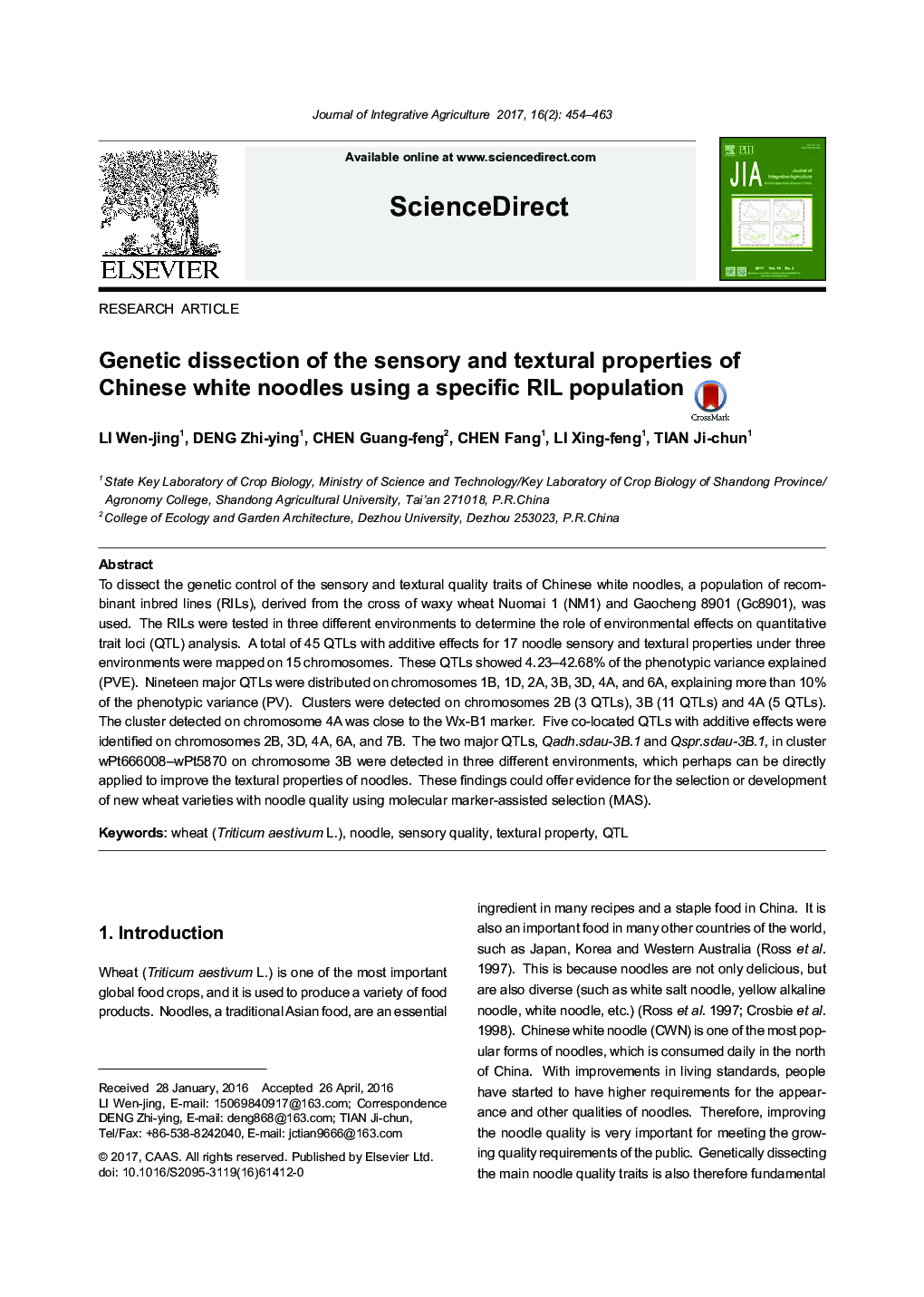| Article ID | Journal | Published Year | Pages | File Type |
|---|---|---|---|---|
| 8876112 | Journal of Integrative Agriculture | 2017 | 10 Pages |
Abstract
To dissect the genetic control of the sensory and textural quality traits of Chinese white noodles, a population of recombinant inbred lines (RILs), derived from the cross of waxy wheat Nuomai 1 (NM1) and Gaocheng 8901 (Gc8901), was used. The RILs were tested in three different environments to determine the role of environmental effects on quantitative trait loci (QTL) analysis. A total of 45 QTLs with additive effects for 17 noodle sensory and textural properties under three environments were mapped on 15 chromosomes. These QTLs showed 4.23-42.68% of the phenotypic variance explained (PVE). Nineteen major QTLs were distributed on chromosomes 1B, 1D, 2A, 3B, 3D, 4A, and 6A, explaining more than 10% of the phenotypic variance (PV). Clusters were detected on chromosomes 2B (3 QTLs), 3B (11 QTLs) and 4A (5 QTLs). The cluster detected on chromosome 4A was close to the Wx-B1 marker. Five co-located QTLs with additive effects were identified on chromosomes 2B, 3D, 4A, 6A, and 7B. The two major QTLs, Qadh.sdau-3B.1 and Qspr.sdau-3B.1, in cluster wPt666008-wPt5870 on chromosome 3B were detected in three different environments, which perhaps can be directly applied to improve the textural properties of noodles. These findings could offer evidence for the selection or development of new wheat varieties with noodle quality using molecular marker-assisted selection (MAS).
Related Topics
Life Sciences
Agricultural and Biological Sciences
Agricultural and Biological Sciences (General)
Authors
Wen-jing LI, Zhi-ying DENG, Guang-feng CHEN, Fang CHEN, Xing-feng LI, Ji-chun TIAN,
